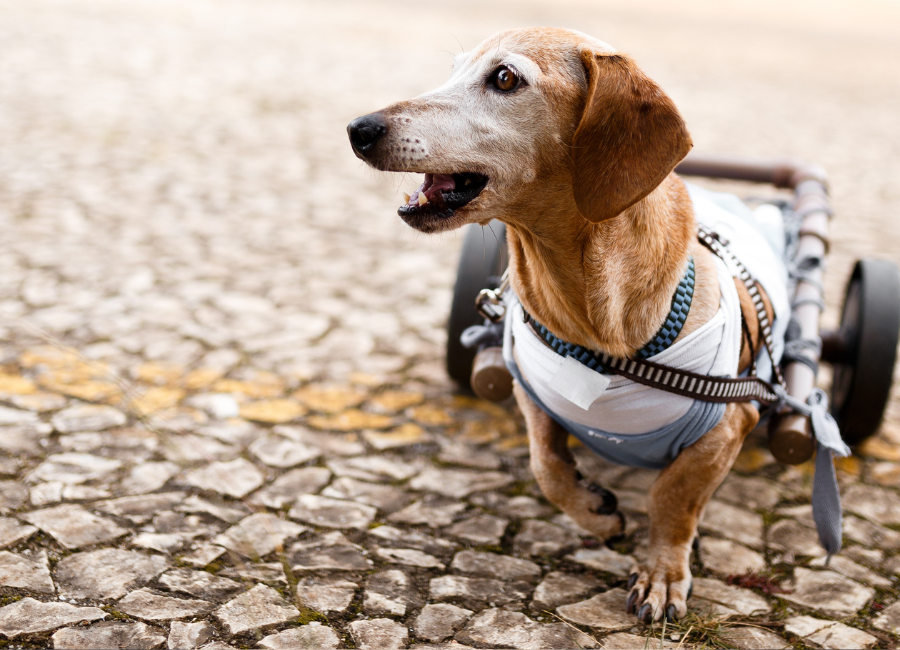How Long Does Dry Dog Food Last?

Properly storing dry dog food is essential for maintaining its nutritional value, freshness, and safety for your pets. However, the shelf life of dog kibble can vary depending on several factors. In this blog, we'll explore how long dry dog food lasts, what affects its shelf life, and tips for keeping it fresh.
How Long Does Unopened Dry Dog Food Last?
Unopened dry dog food typically has a shelf life of 12 to 18 months from the date of manufacture. This "best by" or "use by" date is usually printed on the packaging and indicates the period during which the food retains its peak freshness and nutritional value, until it is opened. The actual shelf life can vary based on the brand, the quality of the ingredients, and the storage conditions.
How Long Does Opened Dry Dog Food Last?
Once opened, dry dog food should be consumed within 4 to 6 weeks for optimal freshness, even if stored in an airtight container. After this period, the food may start to lose its nutritional value and flavour, and the risk of contamination or spoilage increases. Exposure to air, light, heat, and moisture can speed up the degradation process, so proper storage is key.

Factors That Affect the Shelf Life of Dry Dog Food
Several factors influence how long dry dog food remains fresh and safe to eat:
-
Ingredients: High-quality dog food with fewer preservatives may have a shorter shelf life compared to brands with artificial additives. Foods containing natural fats and oils are more prone to oxidation, which can cause the food to go rancid.
-
Packaging: Bags with airtight seals or resealable closures help preserve freshness longer than non-sealed bags. Some packaging is also designed to block light and oxygen, extending the food's shelf life.
-
Storage Conditions: Proper storage plays a significant role in keeping dry dog food fresh. Storing it in a cool, dry place away from direct sunlight and humidity can help extend its shelf life. High temperatures and exposure to moisture can lead to mould growth or spoilage.

Signs That Dry Dog Food Has Gone Bad
Knowing when dry dog food is no longer safe to feed is crucial for your dog’s health. Here are some signs that the food may have gone bad:
- Rancid or Unpleasant Odour: Fresh dog food has a characteristic smell, while spoiled food may have a sour, rancid, or unusual odour.
- Visible Mould or Discoloration: Any signs of mould, off-colour, or changes in texture indicate spoilage.
- Stale or Off Taste: While you wouldn't taste dog food (or maybe you might - we won't judge), your dog might refuse to eat it if it tastes off. A change in taste or refusal to eat can be a sign that the food has lost its freshness.
-
Increased Crumbliness: If the kibble feels unusually dry or crumbly, it might have lost its moisture content and nutritional value.

Oxidation in Pet Food
Oxidation in dog food refers to a chemical reaction that occurs when fats and oils in the food react with oxygen, leading to the breakdown of these components. This process can affect the food's quality, taste, and nutritional value.
Effects of Oxidation
- Nutritional Loss: Oxidation can degrade essential fatty acids, vitamins (especially vitamins A, C, and E), and antioxidants, reducing the food’s overall nutritional value.
- Rancidity: Fats that oxidize can develop off-flavours and odours, making the food less palatable for dogs.
-
Health Risks: Consuming oxidized fats can lead to the formation of harmful compounds, potentially contributing to health issues over time.
Prevention of Oxidation
- Proper Storage: Store dog food in a cool, dark place in an airtight container to minimize exposure to air, heat, and light.
- Use of Antioxidants: Many high-quality dog foods include natural antioxidants, such as tocopherols (vitamin E) and ascorbic acid (vitamin C), to help prevent oxidation.
- Quality Ingredients: Choosing dog foods made with fresh, high-quality ingredients can reduce the risk of oxidation.
Tips for Storing Dry Dog Food Properly
To maximize the shelf life of dry dog food, follow these storage tips:
-
Keep the Original Packaging: The original bag is designed to preserve freshness. Even if you transfer the food to a storage container, keep the bag inside the container to retain the lot number and "best by" date. You should never decanted the food into a plastic container.
-
Use an Airtight Container: Store the food in original packaging in an airtight container to protect it from air, moisture, and pests. Look for containers made from non-toxic, food-grade materials.
-
Store in a Cool, Dry Place: Find a location away from direct sunlight, heat, and humidity, such as a pantry or kitchen cabinet. Avoid storing dog food in garages or outdoor areas where temperature fluctuations occur.
-
Avoid Overbuying: Purchase dog food in quantities that your dog can consume within a month or two. This practice helps ensure that the food stays fresh and reduces the risk of spoilage.
-
Seal the Bag Tightly After Each Use: If you prefer to keep the food in its original packaging, reseal the bag securely with a clip to prevent air exposure.
Can You Use Expired Dry Dog Food?
Using expired dry dog food is not recommended. Although the food may not necessarily be harmful right after its "best by" date, its nutritional quality can significantly decline, and there is a higher risk of spoilage or contamination. If the food smells rancid, shows signs of mould, or your dog refuses to eat it, it’s best to dispose of it and replace it with a fresh bag.

Conclusion
Dry dog food can last for 12 to 18 months unopened and about 4 to 6 weeks once opened if stored properly. Factors like ingredient quality, packaging, and storage conditions affect its shelf life. By following proper storage practices, such as using airtight containers and keeping food in a cool, dry place, you can help ensure your dog’s food stays fresh and nutritious.
Taking the time to store your dog’s food correctly helps protect their health and ensures they get the maximum nutritional benefits from every meal.





